First Post-Covid Pilot Party in Croatia Held, Digital Green Certificates on Schedule for June 1
May 14, 2021 - The first post-Covid pilot party in Croatia took place in Zagreb at the Rooftop Lateral restaurant.
Last night, the first pilot project of a private business event in Zagreb was held, reports HRTurizam.
This is the first event in Croatia, which aims to prove that the event is safe and, in fact, represents a step towards the old normal. About ninety guests gathered to participate in this kind of research. The initiator of the project is the Independent Association of Caterers, with the great support of the Croatian Civil Protection Headquarters and the Croatian Institute of Public Health.
The President of the Association, Žakline Troskot, points out that the project has been prepared since March this year and they are very proud that their idea has been realized. All participants have been vaccinated twice, and after a week, they will undergo testing. "If the results are favorable, catering will return to normal soon, as well as other related industries, which have suffered great losses since some of them have been closed for 15 months," said Troskot.
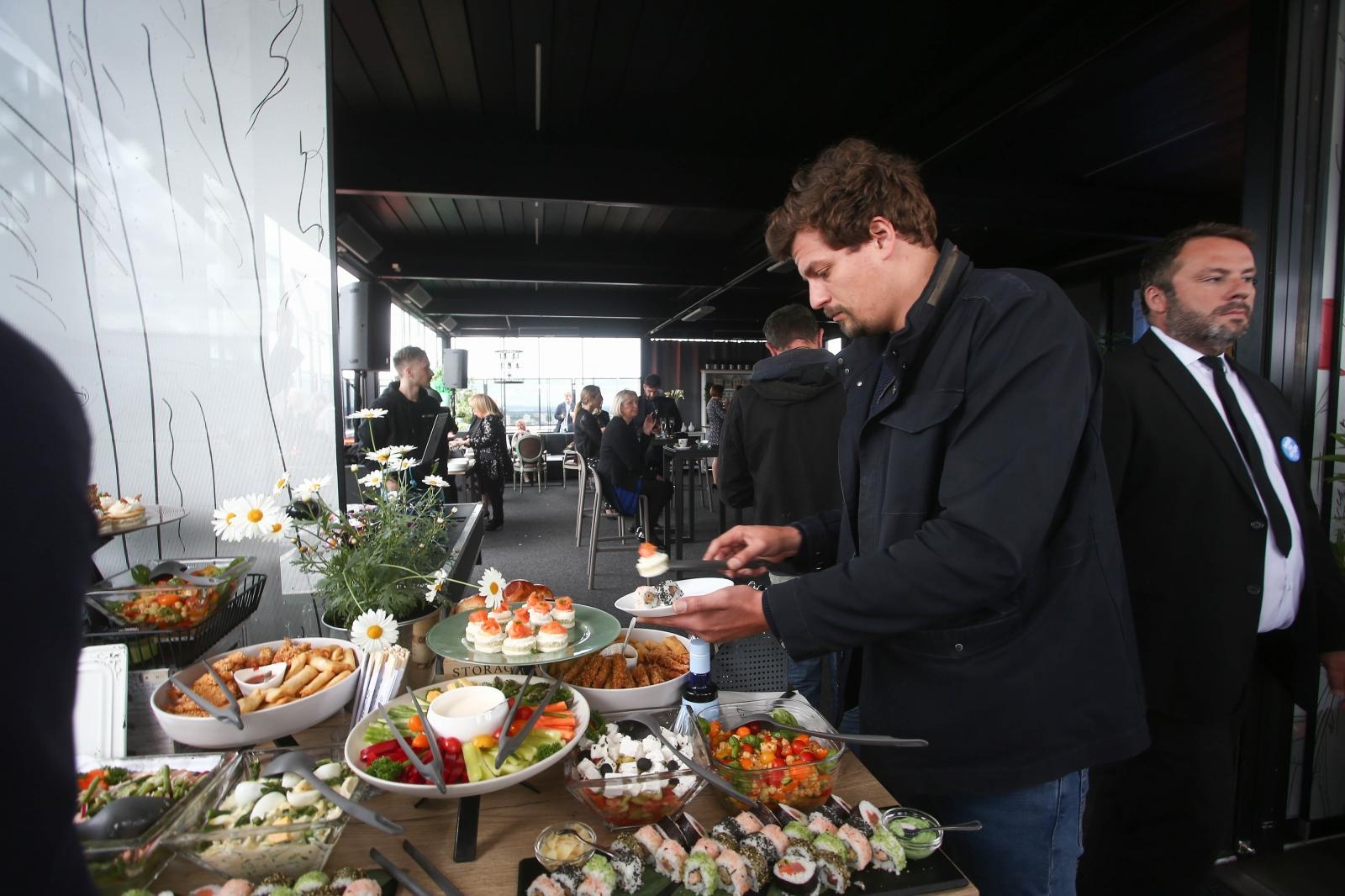
Matija Habljak / PIXSELL
Croatian Institute of Public Health epidemiologist, Ph.D. Dijana Mayer emphasized the importance of vaccination because a large percentage of vaccinated citizens will greatly simplify life and enable events to take place and much greater mobility of people.
Epidemiological constraints have made life difficult for many, and a particularly vulnerable group is the hospitality industry. The decline in turnover in the hospitality industry in the first four months of 2021 compared to the same period in 2019 is 55.5%.
The event industry has been declining by 90% since the beginning of the pandemic. Last year alone, more than 100 festivals were canceled, attracting about a million visitors from all over the world to Croatia every year. Namely, according to Unison's research, this industry accounts for 6.3% of Croatia's GDP and employs about 17,000 people. Only 50-60% of companies and employees involved in events until the pandemic will remain.
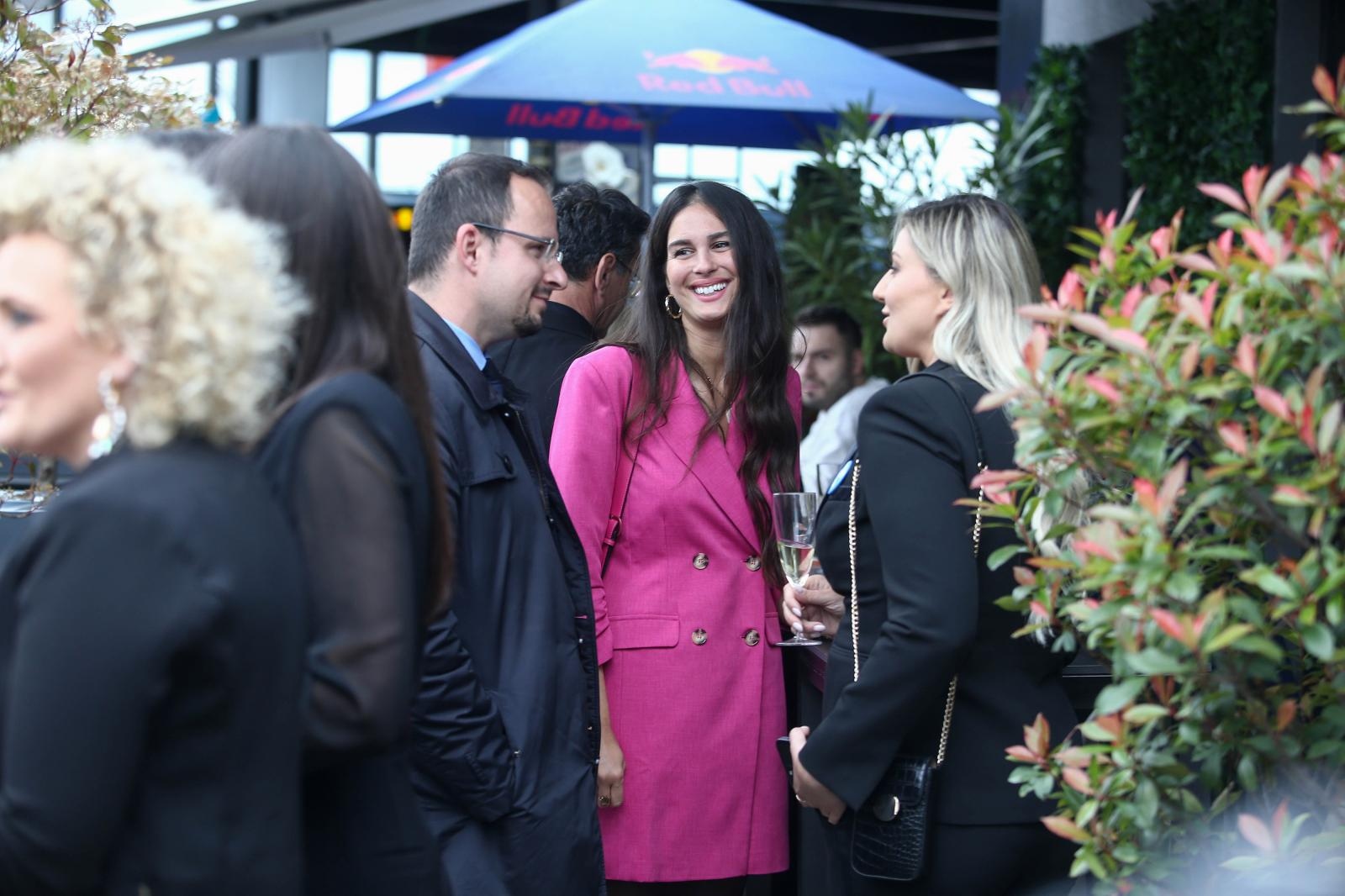
Matija Habljak / PIXSELL
Many newlyweds dream of lavish weddings with live music, which they have not been able to hold in the last 15 months. Provisional statistics from the Central Bureau of Statistics show that the restriction of gatherings has greatly affected the holding of wedding ceremonies.
Often unpredictable circumstances in 2020 influenced couples and their decision to hold wedding ceremonies and, in general, enter into a marital union. Data for all 12 months show that in 2020 the total number of marriages decreased by 22.9% compared to the previous year, i.e., 4,972 fewer marriages were concluded. In Croatia, we have more than 300 catering houses and about as many wedding halls. The sector employs more than 12 thousand people, which makes this figure twice as high when we consider the whole range of related activities involved in organizing a wedding, from planners, decorators, florists, musicians, photographers, and others.
On Saturday, the second pilot project will be held in Zagreb's Riverside Golf Club - a simulation of a wedding ceremony with a live performance by a band, which is expected to have more than 100 participants. Unlike the first, three groups of guests are participating in Saturday's event - vaccinated, tested (the day before at the CNIPH), and people who have already recovered from COVID-19.
Like the first group, the guests from the wedding ceremony will be tested a week after the event. The favorable outcome of both tests will certainly be a step towards the old normal and the possibility of opening catering and other industries while respecting certain conditions defined by the Civil Protection Headquarters of the Republic of Croatia.
Minister of Health Vili Beroš reported on Thursday at the 57th session of the Government of the Republic of Croatia that almost 29 percent of the adult population has been vaccinated with one dose and eight percent with both doses of the Covid-19 vaccine.
A total of 1,571,650 doses of vaccine have arrived in Croatia so far, and more than 1,230,000 doses have been consumed since the beginning of vaccination, said Beroš, adding: “We are recording a promising trend of fewer newly infected people."
Deputy Prime Minister Božinović announced a possible easing of epidemiological measures as of June 1.
"Given that the number of coronavirus patients has been declining in recent days, appropriate preparations are being made for a possible easing of epidemiological measures from June 1, so pilot projects of various events will be implemented in the coming days," Božinović said.
One week after the events, participants will be tested by PCR tests at the CNIPH, and if it turns out that there was no transmission of the infection, ways to relax measures for such events will be considered, Božinović said.
Božinović reported that Croatia was the first member of the European Union to successfully conduct a pilot test of the digital green certificate system, the so-called Covid passport.
"AKD (Agency for Commercial Activity), which is in charge of developing the technical solution, successfully performed testing with a central digital gateway, and it was confirmed that all key components of the Croatian system are functional and ready to start issuing certificates announced for early June," he said. Božinović added that the system successfully generates QR codes for all three types of certificates - on vaccination, testing, and recovery, and the exchange of public keys with other member states through the EU accession, since an application was made to verify certificates of other countries.
The government's working group will define business rules for issuing certificates to citizens, harmonize the visual identity of certificates with EU requirements, prepare communication and information materials, and other technical matters regarding the application of certificates, Božinović added.
For all, you need to know about coronavirus specific to Croatia, including travel, border, and quarantine rules, as well as the locations of vaccination points and testing centers up and down the country, make sure to bookmark our dedicated COVID-19 section and choose your preferred language.
Wizz Air Flights to Dubrovnik Return with Rome Summer Service, Split-Rome Also Announced
May 14, 2021 - The latest news for flights to Croatia as Wizz Air flights to Dubrovnik return with the announcement of a Rome summer service, while a new Split-Rome route will operate, too.
Croatian Aviation reports that the well-known Hungarian low-cost airline Wizz Air will increase the number of aircraft based at Rome's Fiumicino Airport in July and announced two new routes to Croatia. After a long break, Wizz Air is returning to Dubrovnik Airport!
The airline announced on its official website that A321NEO aircraft would be based at Fiumicino Airport. Several routes will be opened to European destinations, including two airports in Croatia - Split and Dubrovnik.
After a long break, Wizz Air returns to Dubrovnik Airport. The line will be in traffic three times a week, from July 1 to October 30, on Tuesdays, Thursdays, and Saturdays.
With as many as 53 planned rotations, Wizz Air will offer more than 25,000 seats between Dubrovnik and Rome!
From July 2, Wizz Air will introduce the Rome - Split Airport - Rome route, which will also operate three times a week, every Monday, Wednesday, and Friday, until October 29. On 52 return flights, the airline will offer as many as 24,856 seats between Split and Rome this summer! This is the seventh new Wizz Air line this summer season to Split Airport.
In addition to Wizz Air, two other airlines operate in the summer flight schedule on the routes from Rome to Dubrovnik and Split: Croatia Airlines and the Spanish airline Vueling.
From July, passengers can choose between three airlines to travel to the Italian capital from Split and Dubrovnik airports, on one of the newest aircraft in the fleet of this well-known European low-cost airline.
Follow the latest on flights to Croatia HERE and the latest travel updates and COVID-19 news from Croatia HERE.
For more on travel in Croatia, follow TCN's dedicated page.
Concerts in Split Return with Summer Events at Open-Air Zenta Club
May 14, 2021 - The open-air Zenta Club in Split will be the venue for a series of great concerts this summer, and the first five have already been announced!
The season opens with Silente and BluVinil on Friday, June 18. Silente comes off the wings of a new single "Never Like This," which is at the top of the charts of the most listened to songs in Croatia, while BluVinil will show why it is one of the fastest-growing domestic pop-rock bands. The day after, on Saturday, June 19, comes the great Darko Rundek and Ekipa.
Goran Bare and Majke will play at the same location on June 24. They will be supported by Sinj rock band M.O.R.T. who is currently working on a new studio album expected to be released later this year.
The Zagreb punk quintet Brkovi is also coming to Open-Air Zenta on Friday, July 16. The day after, on Saturday, July 17, a double concert will be held with Croatia's most successful electro-pop duo Nipplepeople and Jonathan, one of Croatia's strongest live bands.
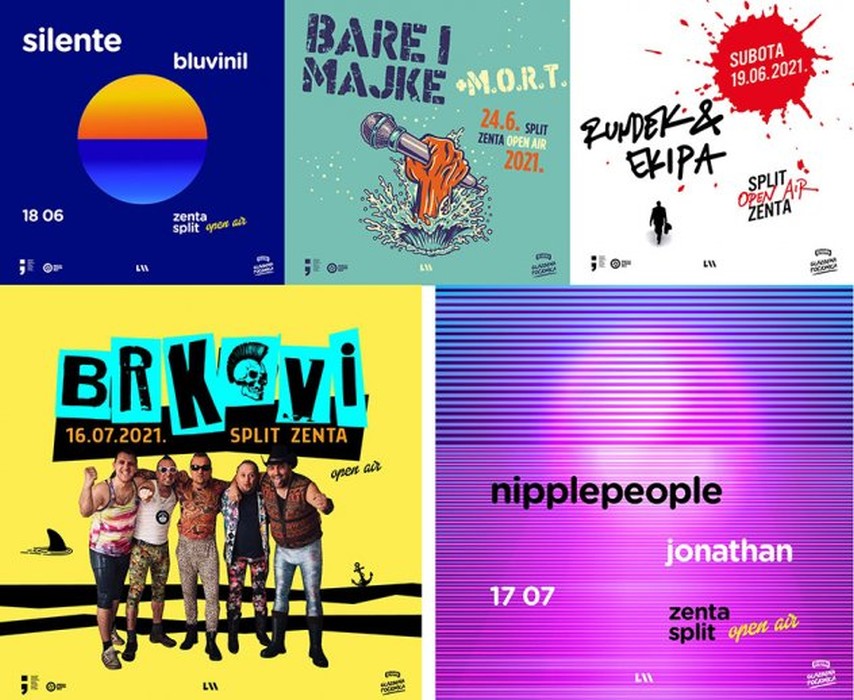
Tickets for all concerts are on sale at all physical Eventim points of sale and online at www.eventim.hr. Physical tickets will be available from next week at Zenta and at the Dancing Bear Music Shop in Split.
Individual ticket prices are Silente and BluVinil 90 kn, Rundek, and Ekipa 100 kn, Bare and Majke with M.O.R.T. 100 kn, Mustache 70 kn, Nipplepeople, and Jonathan 80 kn.
The program is co-financed through the competition "Because it must be played" conducted in cooperation with the Ministry of Culture, the media of the Republic of Croatia, and the Croatian Music Union. The concerts will be held in an extremely limited capacity, with all the measures and recommendations of the Croatian Civil Protection Headquarters, and the number of tickets is limited to 500.
Source: Dalmacija Danas
For more on lifestyle, follow TCN's dedicated page.
Croatian Economic Recovery Certain, National Bank Warns of Threats
May the 14th, 2021 - Croatian economic recovery is certain, and with the vaccination rollout across the country and indeed the rest of the world, particularly in Croatia's emitting markets picking up, the situation with the domestic economy is slowly but surely regaining strength. Despite that, the Croatian National Bank (CNB/HNB) has warned of threats.
As Poslovni Dnevnik/Ana Blaskovic writes, Croatian economic recovery has actually been happening at a far more rapid pace than most could have ever predicted just a few months ago, but the financial system remains exposed to significant risks due to strong public debt growth, inflation in terms of property and the risk of what are known as zombie businesses - all of which are the undeserving victims of the pandemic.
The CNB Council warned that fiscal policy, among other measures, contributed to mitigating the effects of the ongoing coronavirus pandemic, and the decline in revenues and generous support for the Croatian economy spilled over into a jump in public debt (with increased interdependence between banks and the state itself). For the time being, the risks of government financing are mitigated by low risk premiums and favourable financing conditions, as well as generous European Union (EU) funds which have been made readily available.
The problem that has been snowballing for some time now is the warming up of the situation in the real estate market. Although they don't explicitly mention inflation, the CNB points out that "high and rapidly rising residential property prices are increasingly being separated from the economic values that should determine them". The number of transactions during the pandemic decreased somewhat, but prices only slightly slowed growth on the wave of cheap money, government subsidies and stable levels of employment and income.
Housing loans have been growing rapidly, and although they're granted with prudent lending conditions, "part of the loan shows increased repayment ratios to income, which in unfavourable circumstances may exacerbate the effects of disturbances in the real estate market."
Finally, with the longer duration of the coronavirus pandemic and fiscal stimulus associated with it, the threat of corporate sector zombification grows. Parts of the economy continue to suffer from anti-epidemic measures, and while premature repeal of some measures can jeopardise healthy enterprises, those companies with unsustainable business models can also actuallt benefit from maintaining them for too long
. "This may reduce corporate dynamism and zombify the corporate sector, with unfavourable implications for Croatian economic recovery, growth and financial stability," the CNB warned.
For more, follow our lifestyle section.
Checking in with Dubrovnik Digital Nomads-in-Residence – Rob Schubert Interview
cToday’s interview is with Rob Schubert. Rob is a young entrepreneur and tech wizard from the Netherlands. After coming to Estonia to get his master’s degree in the area of digital health, Rob eventually started a healthcare startup VocDec. VocDec is a tool for early screening of autism spectrum disorder (ASD) in newborns. Rob and his team won an award for the most impactful healthcare startup in Europe. After a success like that, it is clear to see why he exudes optimism and is looking forward to new challenges.
Through LinkedIn, he found out about the Dubrovnik Digital Nomads-in-Residence program. Seeing how he wanted to visit Croatia, which he knew to be a beautiful country, Rob jumped at the possibility of applying. After a strict selection process, he ended up being one of the ten nomads selected for the program. Rob will undoubtedly bring a valuable perspective on working and living in Dubrovnik.
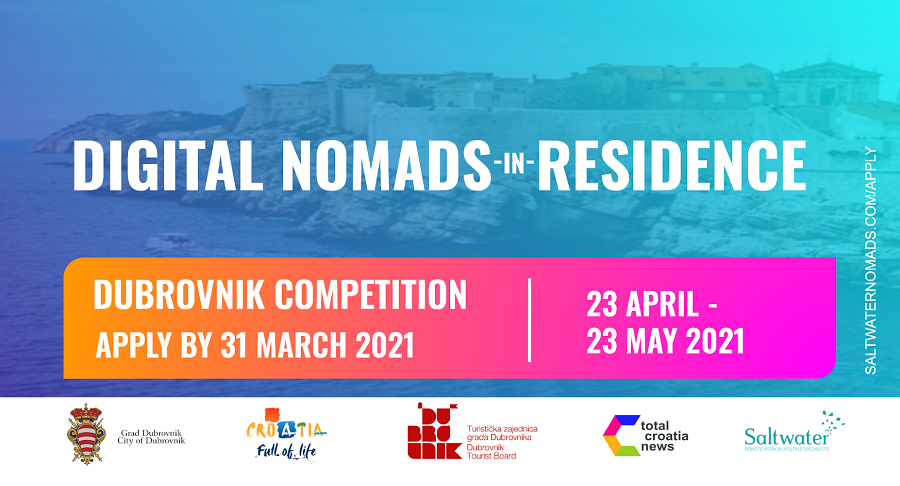
The Digital Nomads-in-Residence program was created by Saltwater Nomads in partnership with Total Croatia News. It will utilise the collective experiences of ten digital nomads living and working in Dubrovnik. Using design thinking process workshops, a strategic direction for the city will be created. Dubrovnik Tourist Board and the City of Dubrovnik both support and collaborate on the program. It represents a push towards the diversification and sustainability of Dubrovnik as a destination.
Paul caught up with Rob recently to ask him a few questions and get his impressions on living in Dubrovnik and being a part of the Digital Nomads-in-Residence program. Particularly interesting were his views on Dubrovnik as a destination prior to the program:
“Before, I knew that this was a highly touristy destination. Mainly, people were visiting for Game of Thrones sights.”
Having spent some time living and working in Dubrovnik, his views of the city as a travel destination have changed:
“ …I see that there are way more opportunities for other types of tourism…”
“I think the city can also communicate something different than being this Old Town… and the set of Game of Thrones.”
In the short video, Rob shares his experiences of working alongside his fellow nomads in a unique Dubrovnik co-working space. Check out the full interview below.
Learn more about the Dubrovnik Digital Nomads-in-Residence program.
Saltwater Nomads' Tanja Polegubic on Dubrovnik Digital Nomad-in-Residence Programme
Dubrovnik Mayor Mato Frankovic on Digital Nomads, US Flights, 2021 Season
The winner announcement video:
For the latest digital nomad news from Croatia, follow the dedicated TCN section.
Dubrovnik Tourism Attempts Rebound with 50% Price Slashes
May the 14th, 2021 - Dubrovnik tourism, much like the tourist industry across the rest of the country, has taken a tremendously strong blow thanks to the ongoing coronavirus pandemic.
The City of Dubrovnik and its surrounding area, which is primarily an air destination due to the fact that it is so far south and currently still cut off territorially from the rest of Croatia by Neum, the only part of neighbouring Bosnia and Herzegovina's coastline, has been empty like never before over the past year or so.
As Poslovni Dnevnik writes, Dubrovnik in 2020 was more or less a ghost town when compared to other wildly successful tourist years in which Croatia's southernmost city lay lazily and comfortably on its laurels.
When it comes to the ever pressing question of just how it will be this year, no one knows the answer. About a thousand guests are currenly wandering along Stradun every day over recent days, so at the minute, things look a bit like March in normal, pre-pandemic years for Dubrovnik tourism. That's why the city's hotel rooms are still 10 to 50 percent cheaper than normal, as are booking prices for private accommodation. Many restaurants are still closed, and those that have opened are offering discounts of up to 50 percent, writes RTL.
No one in Croatia's tourism Mecca expected to hear silence. The silence about which the Dubrovnik's famous troubadours sang 32 years ago, happened for real back during the pre-season of a very fateful 2020. These days last year, only a hundred tourists walked along Stradun, today - only a thousand of them do the same.
Although a thousand nights a day is a good increase, Dubrovnik tourism is still hungry for human traffic and guests are seeking a proper holiday. Therefore, private renters, as well as hoteliers, decided to lower their prices. They have lowered their prices by 10 to 50 percent, so it's possible to spend cheaper nights in the very heart of this stunning UNESCO city, as well as outside of it, because tourists are no longer only interested in a safe location but also cheaper accommodation.
Along with Australians and Americans, other Europeans such as Brits were the city's most frequent foreign guests. With new direct flights announced from the US to Dubrovnik, hopes remain high for American visitors with deep pockets in summer 2021.
Up to 70 planes a day from all over the world could soon take to Dubrovnik's deep blue skies. The first cruise ship, announced on June the 11th, is also eagerly awaited, a stark contrast to the complaints of too many cruisers, too much pollution and the newly coined term that the Venetians know so well - overtourism - as Dubrovnik tourism continues to grapple with the invisible enemy which is the novel coronavirus.
For more, follow our dedicated travel section.
OPG Hazic Launches First Wine Camp in Name of Rural Tourism
May the 14th, 2021 - The very first wine camp owned and run by OPG Hazic, a Croatian family farm, is set to give rural tourism a kickstart in beautiful yet frequently overlooked continental Croatia.
As Poslovni Dnevnik/Ivan Tominac writes, OPG Hazic in Sveti Martin na Muri in Medjimurje is the first to be known as a wine park in all of the Republic of Croatia.
Presented last weekend, it offers twelve pitches for campers and eight wooden mobile homes that will be available as of early July this year, and is built to the highest environmental standards with a category of four ''suns''.
The camp was built from the OPG Hazic's own family investments and the support of EU funds. Since back in 2015, they have applied for six projects worth as much as 5 million kuna, and the venture of the wine camp in beautiful Medjimurje has been financed with a sum of 1.5 million kuna.
Its full value exceeds that amount, the construction of the camp is worth 3.5 million kuna, and the investments will offer accommodation to tourists who want to enjoy nature, wines, sparkling wines, juices and other apple products from OPG Hazic and the rich tourist offer of Medjimurje in general.
“We've invested a lot of effort and energy into our wine camp. I'm happy that we succeeded. Although we have to set up the mobile homes by the end of June, the first campers have already arrived,'' said owner Tatjana Hazic who has been running the farm with her sister Valentina for many years now.
When on holiday in the camp, days can be spent cycling, enjoying the wellness services of Terme Sveti Martin, getting better acquainted with local cultural sights, enjoying adventure activities and enjoying local gastronomic delights.
Emphasis is also being placed on what's known as experience tourism, meaning that tourists will have the opportunity to participate in the usual daily activities which are key to Medjimurje's local economy. In this way, they will be able to pick the fruits themselves, which the owners of OPG Hazic will pack and prepare appropriately so that they can take them with them.
“The OPG Hazic story represents a very successful tourist story of rural Croatia, which provides the best of Medjimurje through rural tourism. Money withdrawn from EU funds certainly helped them out in their development, but the immeasurable contribution of this valuable family as a whole mustn't be neglected, nor should the fact that they invested their own funds in improving the quality of their own products and their tourist offer,'' said Aleksandra Kuratko Pani, head of the Croatian Rural Tourism Association, of which OPG Hazic has been a member since 2020.
For more, follow Made in Croatia.
Vili Beros: That "So Long, Corona" Moment is Edging Ever Closer
May the 14th, 2021 - Croatian Health Minister Vili Beros has assured the public that with the vaccination rollout becoming more and more successful across the country, that much anticipated moment at which we say so long to the coronavirus pandemic is edging ever closer.
As Poslovni Dnevnik writes, Health Minister Vili Beros said at a government session held on Thursday that so far, almost 29 percent of the Croatian adult population has been vaccinated with a single dose, and eight percent of those people have been vaccinated fully, meaning that they have received both doses of one of the vaccines effective against the novel coronavirus, SARS-CoV-2.
A total of 1,571,650 doses of vaccine have arrived in the Republic of Croatia so far, more than 46,000 doses were administered on the 12th of this month, and more than 1,230,000 doses have been administered since the start of the vaccination rollout which began earlier this year, Vili Beros said.
"We're recording a promising trend and increasing the number of vaccinated people, as well as significantly fewer newly infected people. The daily report on the number of infected people shows that people continuously place their trust in trust the profession,'' he said.
''Mass vaccination points across the country are an indicator of the organisation, unity and efficiency of the Croatian healthcare system,'' said Vili Beros, before thanking all of the vaccinators and volunteers in the field making sure the pandemic comes to an end as soon as possible.
"On the eve of the arrival of summer holidays, with each additional dose, we're closer to the circumstances that we can say 'so long, corona' (adio korona) according to the action soon to take place of the same name, which will take place in the City of Split in two days," concluded Vili Beros.
For all you need to know about coronavirus specific to Croatia, including travel, border and quarantine rules, as well as the locations of vaccination points and testing centres up and down the country, make sure to bookmark our dedicated COVID-19 section and choose your preferred language.
Escape to Osijek-Baranja County and its Epic Sights and Flavours
May 14, 2021 – Breathtaking views of the Danube at Erdut and Aljmaš, the bona fide masterpiece of Đakovo cathedral, the unique winemaking traditions of northern Baranja, the wildlife-rich wetlands of Kopački rit and the OPGs of Osijek-Baranja County. There's a whole other world to discover in this epic corner of Slavonia-Baranja.
It seems like the world is speeding up. Everything now is that much more immediate. In this age of Instagram and 'influencers', we quickly scroll past postcard-pretty pictures on our phones. 'Like'. Forgotten, in an instant.
Croatia is a country not without postcard-pretty pictures. But, to snatch attention in this super-fast, vacuous age, all too often we are shown the same images. Heart-shaped islands from above, dolphins at dusk, sunset over the Adriatic and its epic Dinaric Alps. You could be forgiven for thinking that every view in Croatia contains the sea.
 Slavonia © Romulić & Stojčić.
Slavonia © Romulić & Stojčić.
There are very few mountains in the Pannonian basin. And there is no sea. Well, not any more. Instead, these flatlands stretch 600 km from east to west and 500 km from north to south through several countries. They engulf the eastern section of Croatia we know as Slavonia, Baranja and Srijem.
Unsurprisingly, such a vast plain is not without its epic qualities. But, the epic nature of Osijek-Baranja County in Slavonia-Baranja is difficult to capture in a competing image on social media. Its special qualities instead lie in the sounds, the tastes, the tradition, the sights and the people. This is a place that has to be visited to be understood. And, if you do, it's an experience that will far outlast any fleeting photo on Instagram. Here, we take a look at just a small section of the unforgettable offer in Osijek-Baranja.
Imperial horses and the bona fide masterpiece of Đakovo cathedral
State Stud Farm Đakovo
Horse breeding in Đakovo is thought to be even older than 1506 when first written mention of the town's stud farm comes from. An endeavour of regional bishops, it bred horses of Arab stock. But, that changed at the beginning of the 19th Century.
 In the fields, Lipizzaner horses © Silvija Butković.
In the fields, Lipizzaner horses © Silvija Butković.
Lipizzaner horses were the prized breed of the Habsburg monarchy, their genetic line today traced back to eight stallions from the late 18th and early 19th centuries. With the advancement of Napoleon's army across Europe, Lipizzaners were sent further east in order to protect them. This imperial horse has been bred in Đakovo ever since.
Born with black skin and black hair, their hair gradually turns to a characteristic light grey (although, some other colours occur). Traditionally, when the colour change was fully complete, the horses were ready for royal duty.
 Younger horses on the State Stud Farm in Đakovo © Denis Despot / Tourist Board of Osijek-Baranja County.
Younger horses on the State Stud Farm in Đakovo © Denis Despot / Tourist Board of Osijek-Baranja County.
Today, at the State Stud Farm Đakovo, the Lipizzaners are bred and trained in dressage. The farm contains Croatia's largest indoor riding hall, in which public performances take place. Previous visitors to the farm include several members of the British Royal family. Queen Elizabeth II, Prince Phillip and their daughter Princess Anne came in 1972, while Camilla, Duchess of Cornwall came in 2016.
Đakovo cathedral
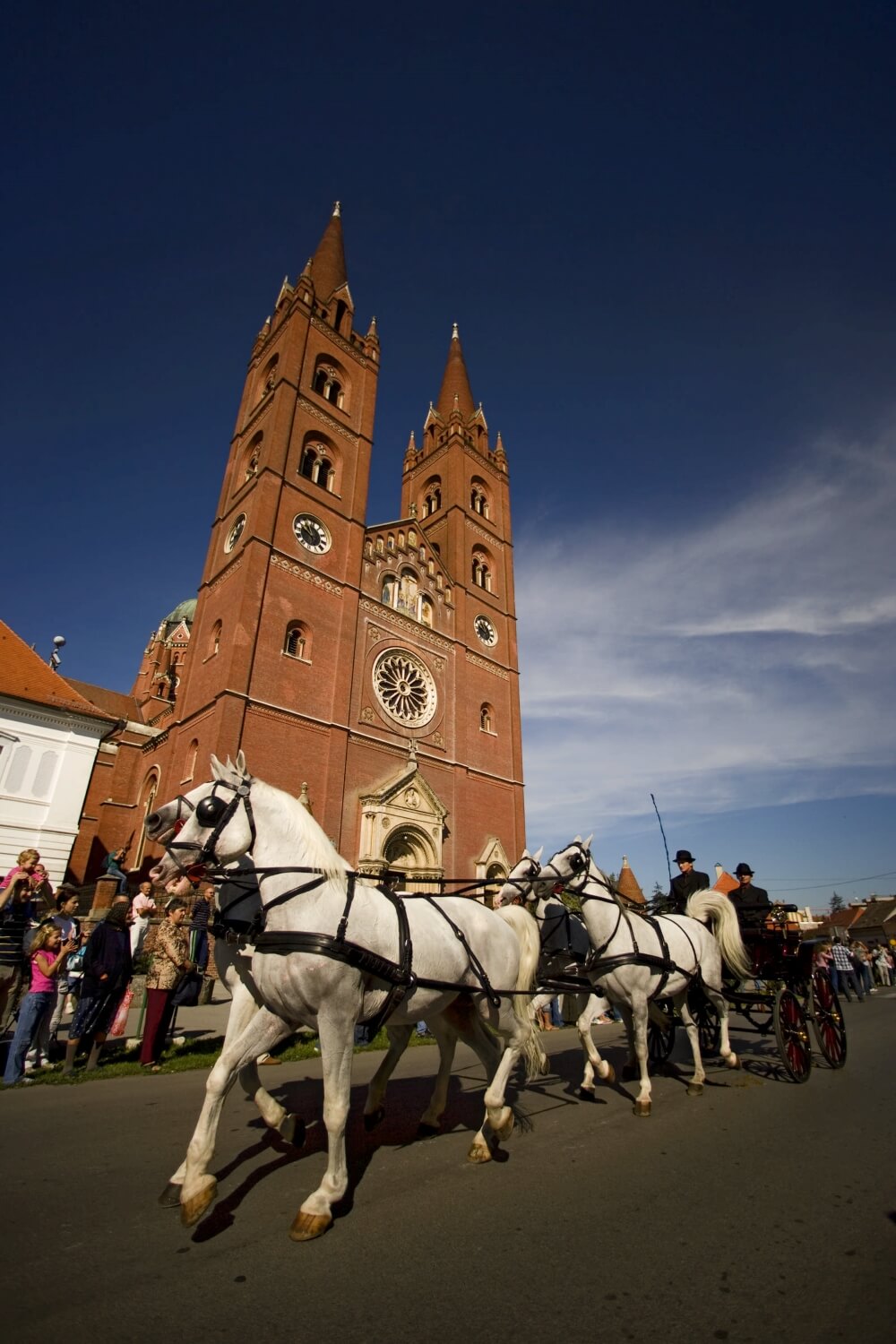 Exterior of Đakovo cathedral © Romulić & Stojčić.
Exterior of Đakovo cathedral © Romulić & Stojčić.
The presence of Bishop Josip Juraj Strossmayer looms large in the history of Croatia. Nowhere does that presence loom larger in a physical manifestation than Đakovo cathedral. By far, it is the largest sacral building in Slavonia, the second-largest in Croatia.
 © Romulić & Stojčić
© Romulić & Stojčić
This part of Slavonia is completely flat. Therefore, you can see the cathedral for miles as you approach Đakovo. Once up closer, its red bricks give it the appearance of a modern building. In fact, Josip Juraj Strossmayer oversaw its construction between 1866-1882. In truth, he'd wanted to build it for much longer, but struggled to get the funds required for his vision. Indeed, the project was so delayed that the artist Strossmayer chose to paint the interior, German Nazarene Johann Friedrich Overbeck, died before he could begin the task. Instead, father and son Alexander Maximilian Seitz and Ludwig Seitz assumed the task.
 Interior detail in Đakovo cathedral © Romulić & Stojčić
Interior detail in Đakovo cathedral © Romulić & Stojčić
The building's construction actually only took four years, but it took a full 19 years to complete decorations inside. It's easy to see why. The interior of Đakovo cathedral is a bona fide masterpiece. Ornate frescos depicting scenes from the Old Testament and New Testament radiate from above. Regardless of your faith, it is a breathtaking experience to walk within.
 © Romulić & Stojčić
© Romulić & Stojčić
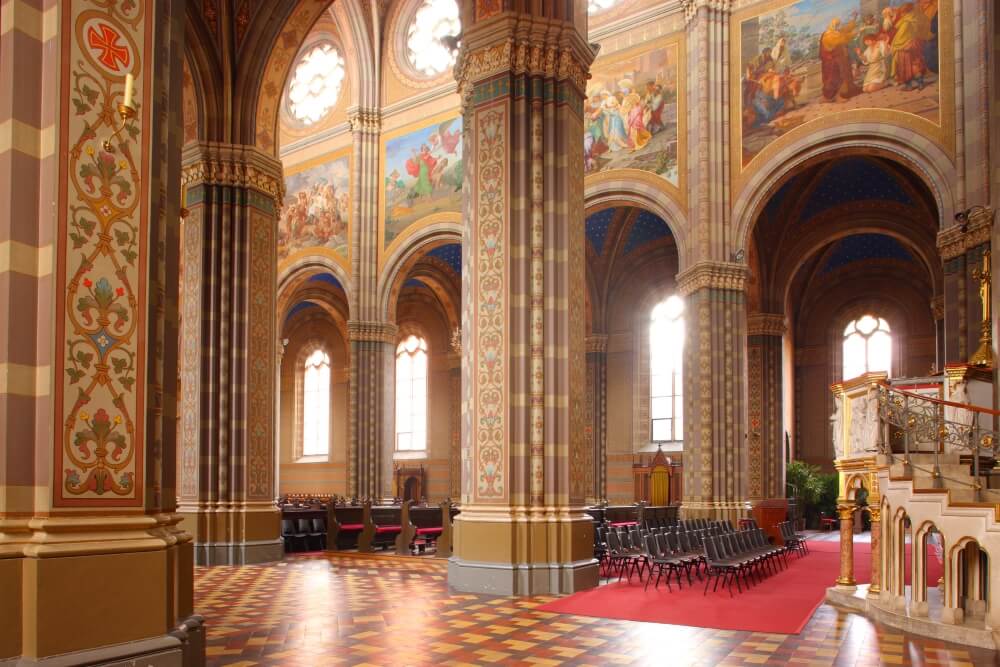 © Romulić & Stojčić
© Romulić & Stojčić
13 of the frescoes are by Alexander, 20 are by Ludwig. The detail of their work captivates the eye. The Neo-Romanesque architectural flourishes design inside are similarly grandiose. Visiting while on a journey to Bulgaria, future Pope John XXIII proclaimed it to be the most beautiful church between Venice and Constantinople.
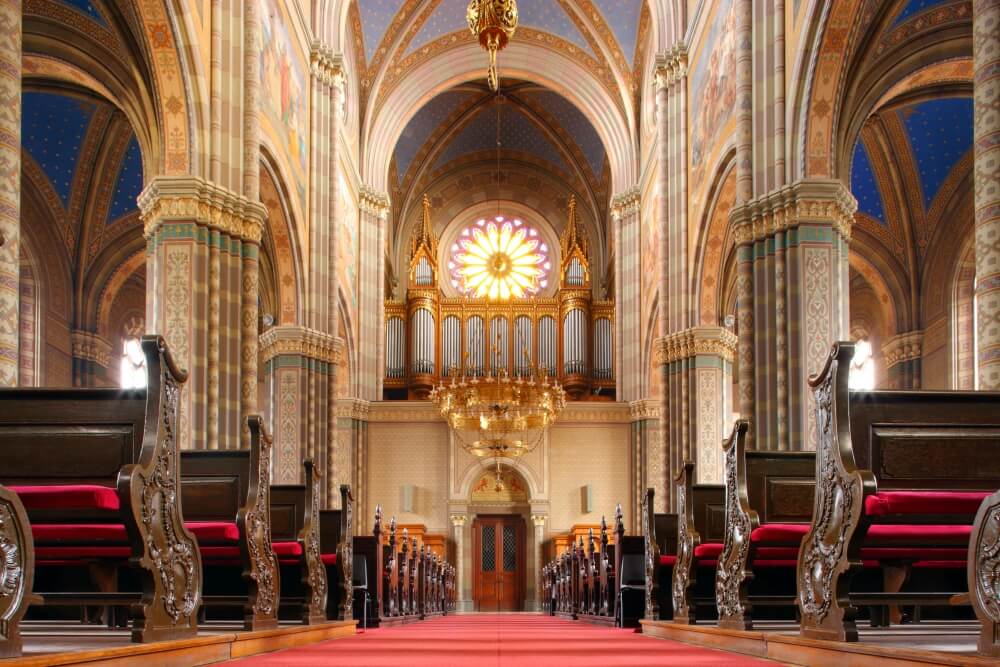 © Romulić & Stojčić
© Romulić & Stojčić
Breathtaking views of the Danube at Erdut and Aljmaš
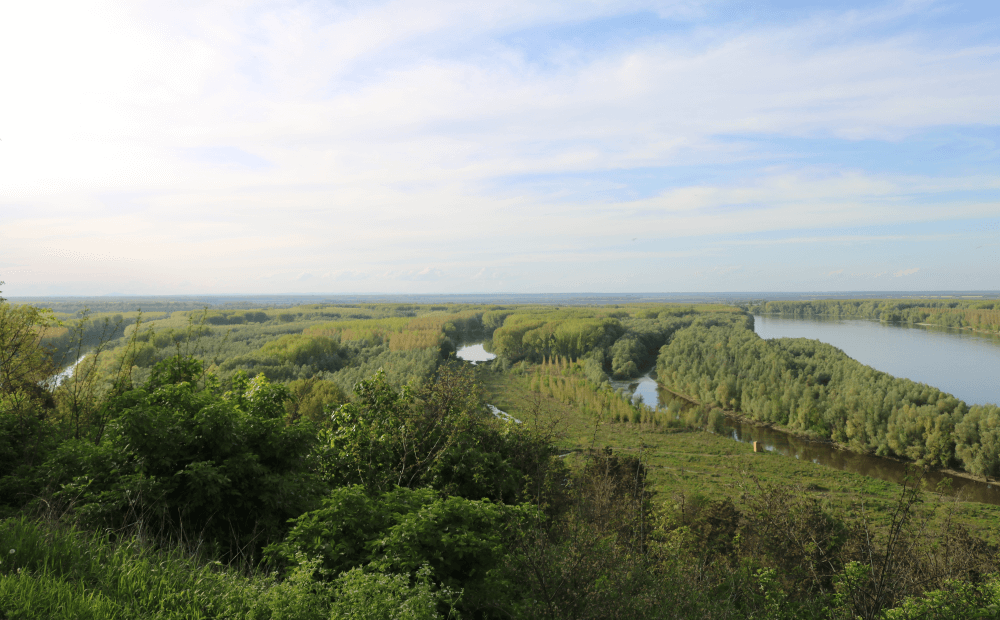 The Danube, as seen from the Brzica winery terrace in Erdut © Marc Rowlands.
The Danube, as seen from the Brzica winery terrace in Erdut © Marc Rowlands.
Slavonia is defined by its two longest rivers. To the south, after passing through Zagreb and Lonjsko Polje, the Sava forms a natural border between Slavonia and Bosnia. To the north, the Drava river first separates Croatia and Hungary. Then, after Donji Miholjac, it serves as the border between Slavonia from Baranja. Just a mile or so from Aljmaš, the Drava flows into the Danube, which partially separates Slavonia from Vojvodina.
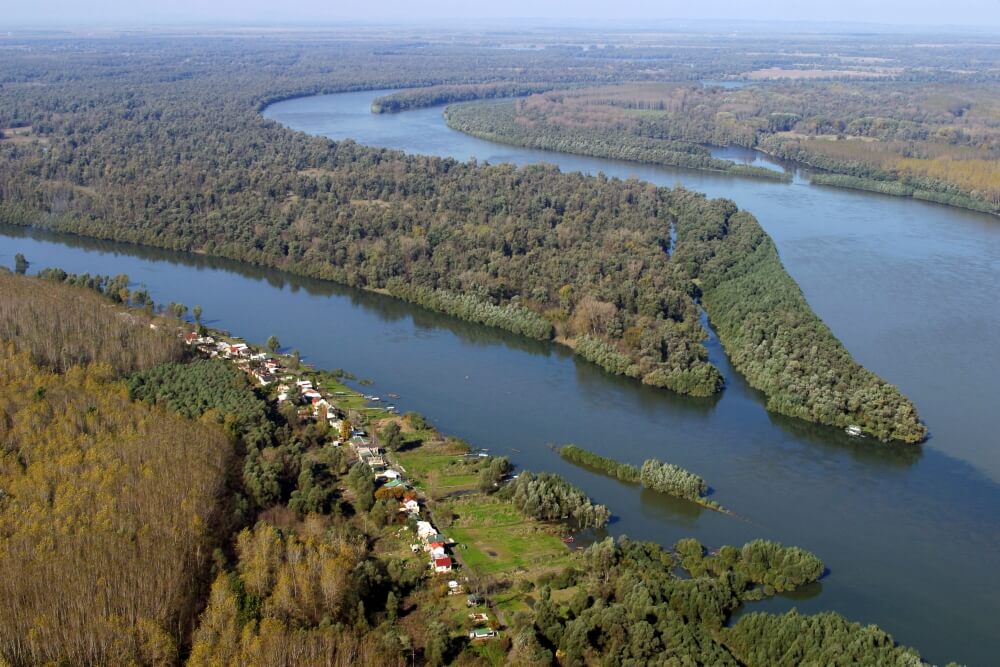 The Danube in eastern Slavonia © Romulić & Stojčić.
The Danube in eastern Slavonia © Romulić & Stojčić.
When you're standing overlooking the Danube in Erdut village, you could almost believe you're on an island. The peninsula in which the village lies is surrounded on three sides by the Danube. It weaves in and out of the landscape, causing great gulfs between the dense forest that occurs on each side. This area is noticeably raised above the height of regular, flat Slavonia and in Erdut, a small castle tower stands on a hill. It's one of the best places to look at the Danube. The other is from the Brzica winery, less than a kilometre away.
At Brzica, you're some 80 metres above the Danube. Here, winery owner Ivo Brzica has taken advantage of the view. He's built a beautiful holiday home where guests can stay. It's right next to his own dwelling and the winery. The properties share a huge, open and informal terrace overlooking the river. It's a great place to try the award-winning Brzica wines. They plant Graševina, Chardonnay, Cabernet Sauvignon, Merlot and Vranac. On some bottles, the label reads 1378. It's the number of kilometres the Danube has travelled to reach this point.
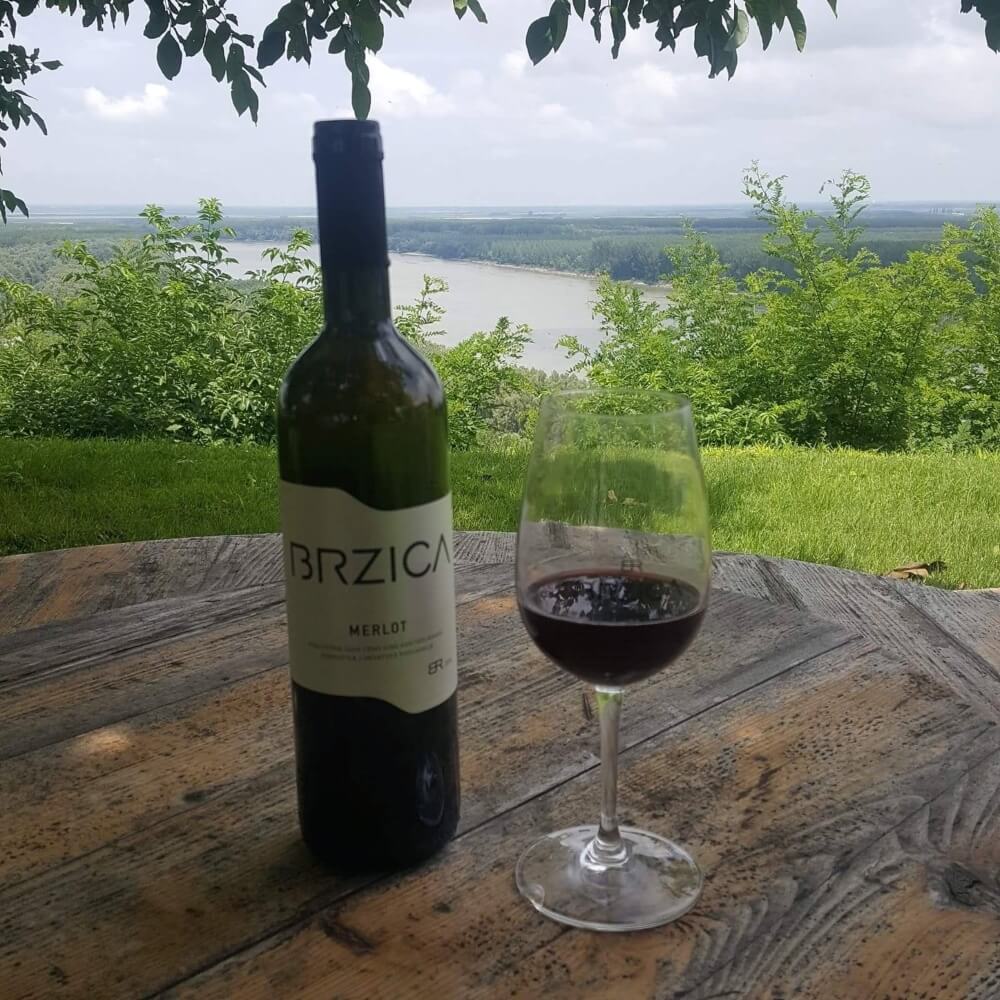 A glass of Brzica wine overlooking the Danube.
A glass of Brzica wine overlooking the Danube.
Erdut visitors wanting to get up closer to the Danube can now do just that. A newly appointed 10-kilometre footpath now runs alongside the river all the way from Erdut to Aljmaš. It's a beautiful walk through epic nature.
The unique landscape and winemaking traditions of northern Baranja
While much of Slavonia is uniformly flat, the topography is more varied in Baranja. Baranja Mountain stretches in a northeast-southwest direction between Beli Manastir and Batina. It is 21 kilometres long, three kilometres wide and much of its slopes are used for agriculture, grapes for winemaking, predominantly.
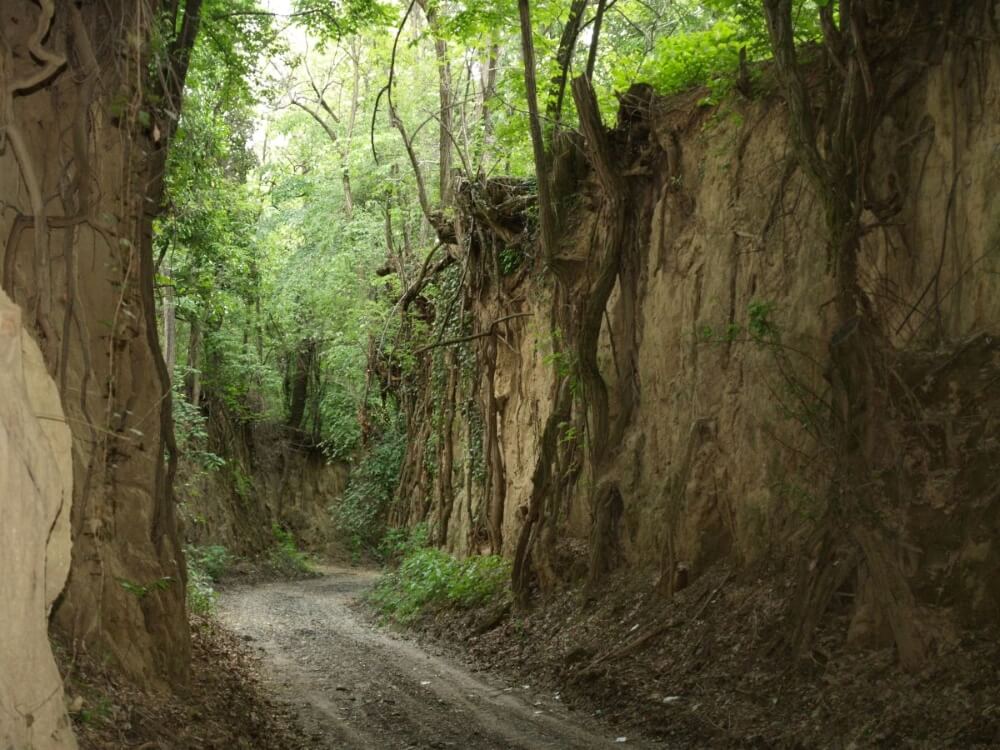 A Surduk in Baranja © Krešimir Čandrlić / Tourist Board of Osijek-Baranja County.
A Surduk in Baranja © Krešimir Čandrlić / Tourist Board of Osijek-Baranja County.
Long ago, heavy rains began to produce natural gorges which cut through the higher ground. Over time, some of these became considerably deep, widened by the flow of water and sometimes mud. Eventually, these gorges between hillsides became passageways for horses and carts. In Croatia, these narrow routes are exclusive to the Baranja region and are very pretty to walk. Their walls are lined with tree roots, which stop them from collapsing. The branches and leaves of these trees often overhang the gorge, sometimes giving you the impression you're in a tunnel. Such a route in Baranja is known as a Surduk.
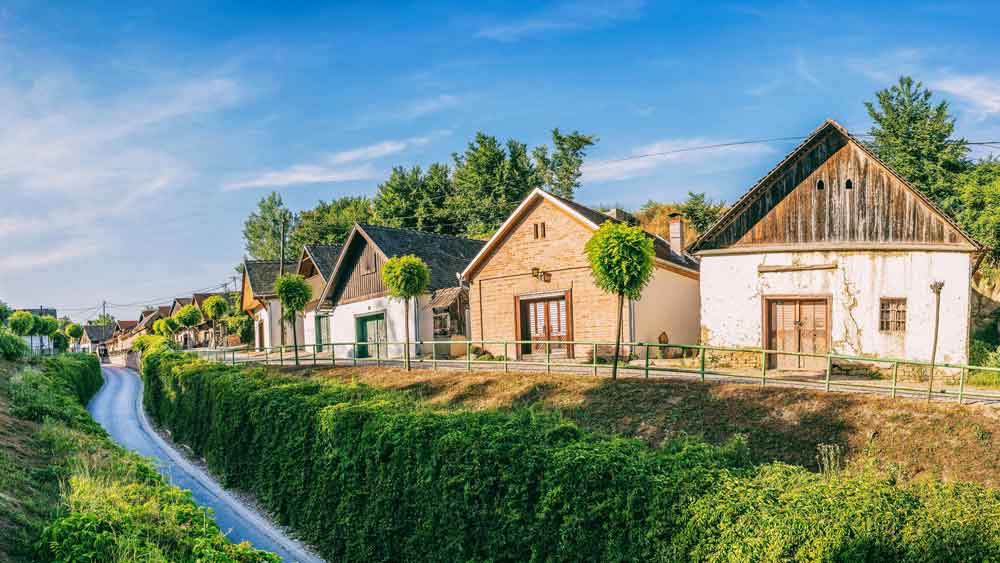 A line of traditional Baranja wine cellars. Unique in Croatia to Baranja, such a building is known as a Gator © Visit Baranja.
A line of traditional Baranja wine cellars. Unique in Croatia to Baranja, such a building is known as a Gator © Visit Baranja.
On this same ground, you'll find another phenomenon unique to Baranja. A Gator is a traditional wine cellar of this region. Sometimes found on the lower course of a Surduk, a Gator is unlike a typical wine cellar in that it has no subterranean section where the wine is stored. Instead, a Gator extends back into the hillside. Wine is kept in the deepest recesses of the building, where it is coolest. In several places in Baranja you can see a street with several of these buildings side by side. Usually, each Gator is owned by a different family and each will make their own particular family wine.
Podrumi Kolar family winery in Suza
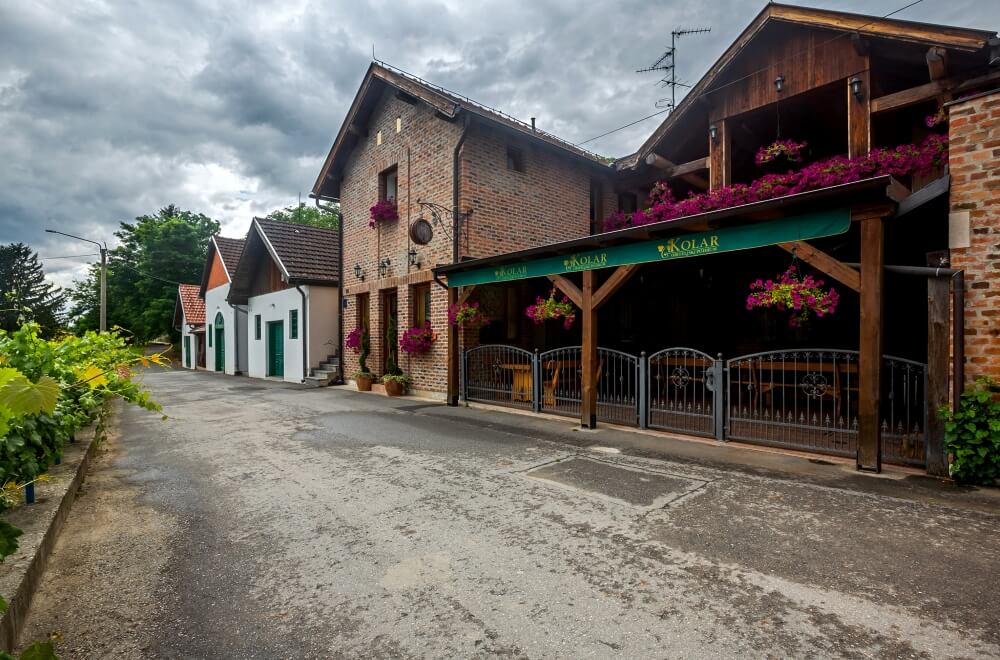 With a 100-year-old cellar and great wines, the Podrumi Kolar family winery in Suza.
With a 100-year-old cellar and great wines, the Podrumi Kolar family winery in Suza.
The Kolar family wine cellar is 100 years old, although the restaurant and tourism aspect of their enterprise has only been around since 2004. The whole family are involved and they purposefully intertwine their winemaking with a visitor offer. In addition to the restaurant attached to the wine cellar and they have a wonderful campsite just a couple of hundred metres down the road. All of their wines are great. But, if you visit, be sure to try their Sauvignon. Some say it's the best in the whole of Baranja.
Josić winery and restaurant in Zmajevac
 Traditional Baranja and Slavonia flavours at the Josić winery and restaurant in Zmajevac.
Traditional Baranja and Slavonia flavours at the Josić winery and restaurant in Zmajevac.
At the Josić winery and restaurant in Zmajevac they make brilliant wines. Among them, Baranja shiller, Cabernet Sauvignon, Chardonnay, Graševina, Pinot Gris and Sauvignon. You can visit the wine cellars and try traditional foods of the region in their extensive restaurant.
Vinarija Gerštmajer in Zmajevac
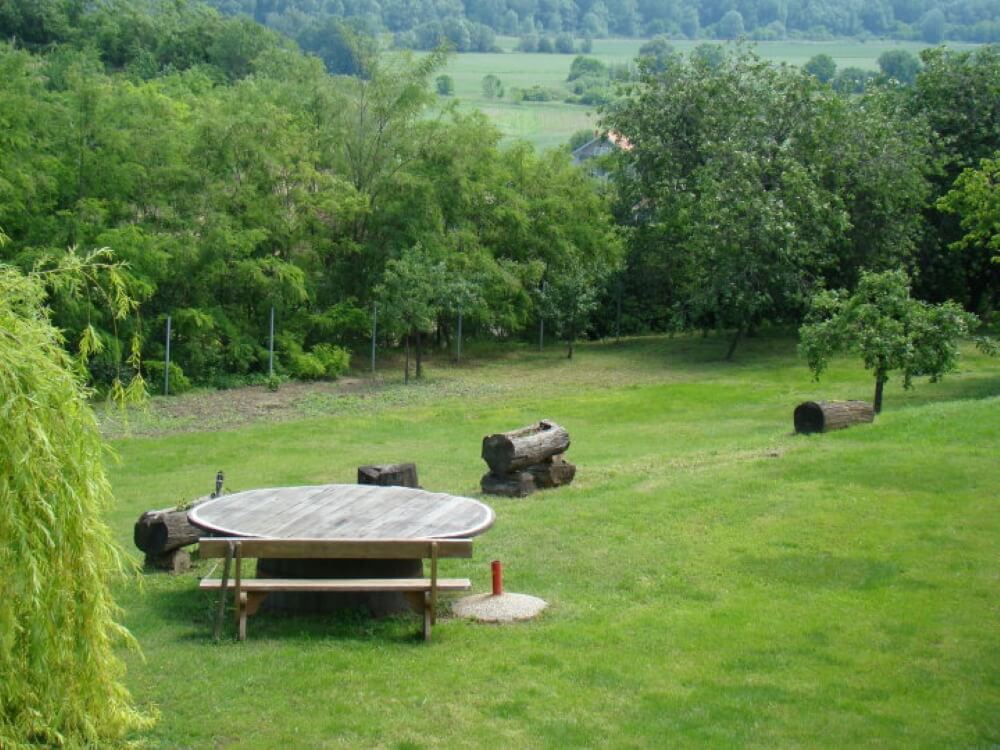 Incredible views from the garden at Vinarija Gerštmajer in Zmajevac.
Incredible views from the garden at Vinarija Gerštmajer in Zmajevac.
A deep dust gathers on some of the oldest bottles kept in the cellar at Vinarija Gerstmajer. And, there's plenty of those. The charming family patriarch is clearly a proud wine enthusiast and reserves some bottles from every year of their celebrated but small production. Sadly, this archive now stretches back only until the mid-1990s. It used to be much older, cataloguing all of the years his own father ran the winery. But, when the family returned after the war, they were greeted by empty cellars. The cellars are once again full. You can try them in the cellar or out on the terrace, overlooking a scene of uninterrupted nature.
The wildlife-rich wetlands of Kopački rit
 Wetlands of Kopački rit © Tourist Board of Osijek-Baranja County.
Wetlands of Kopački rit © Tourist Board of Osijek-Baranja County.
Occupying the marches, lakes and floodland between the Drava and the Danube, Nature Park Kopački rit is one of Europe's largest wetlands. Although a home to many different types of life, it is most famous for its bird population. As many as 300 different species of birds inhabit the park, many of them being migratory and nesting species. Of particular note, a large colony of grey heron and and the largest population of woodpeckers in the entire Danube basin. You can now tour a section of the waters in a large visitor boat. It is electrically powered so as not to disturb the life-rich riverbanks. After the boat drops you off, make your way through the rest of the park across specially constructed pathways that wind their way across the waters and reeds.
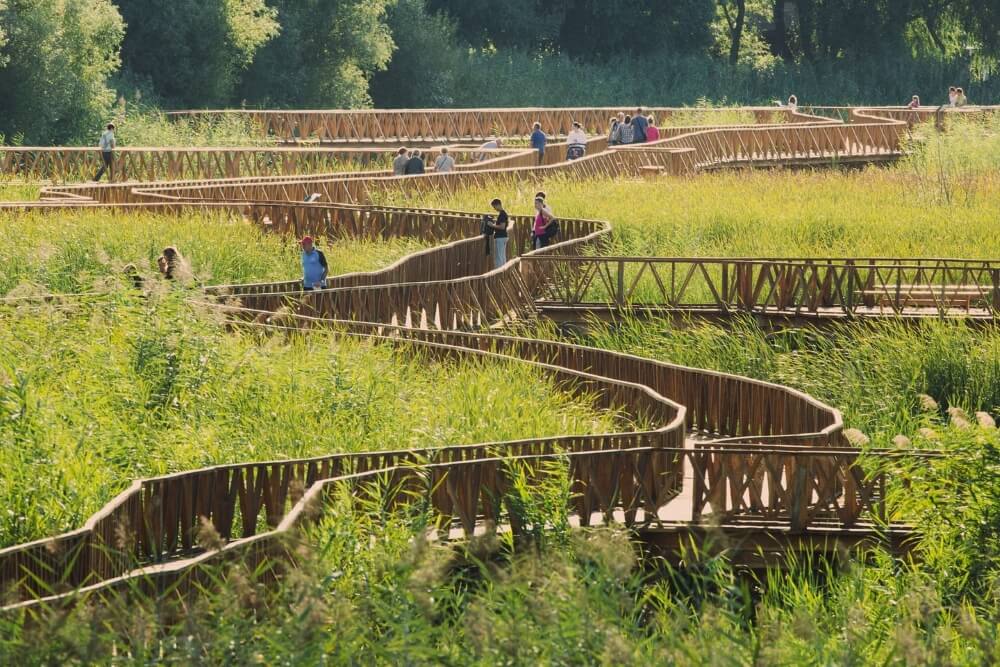 The wooden walkways of Kopački rit Nature Park in Osijek-Baranja County © Romulić & Stojčić.
The wooden walkways of Kopački rit Nature Park in Osijek-Baranja County © Romulić & Stojčić.
The OPGs of Osijek-Baranja County
The landscape in Osijek-Baranja County is only so picturesque because of the people who live in it. It is their endeavours that shape it. Traditional agricultural pursuits explain the pretty rows of vineyards, the different coloured fields and gardens filled with fruit trees. While some agriculture here exists on a grand scale, many families in the region make the most of their own small plots of land.
Osijek-Baranja County family farms or OPGs preserve the traditions of the region, not only in the way they use the land but in the produce that results. From the beekeeping that makes EU-protected honey to the vineyards producing Croatia's best white wine, practices in these family farms are often passed down from generation to generation. The best way to learn how they do it – and try the amazing traditional flavours of Osijek-Baranja County – is to go to an OPG. Here are just several you can visit.
Zorić distillery in Erdut
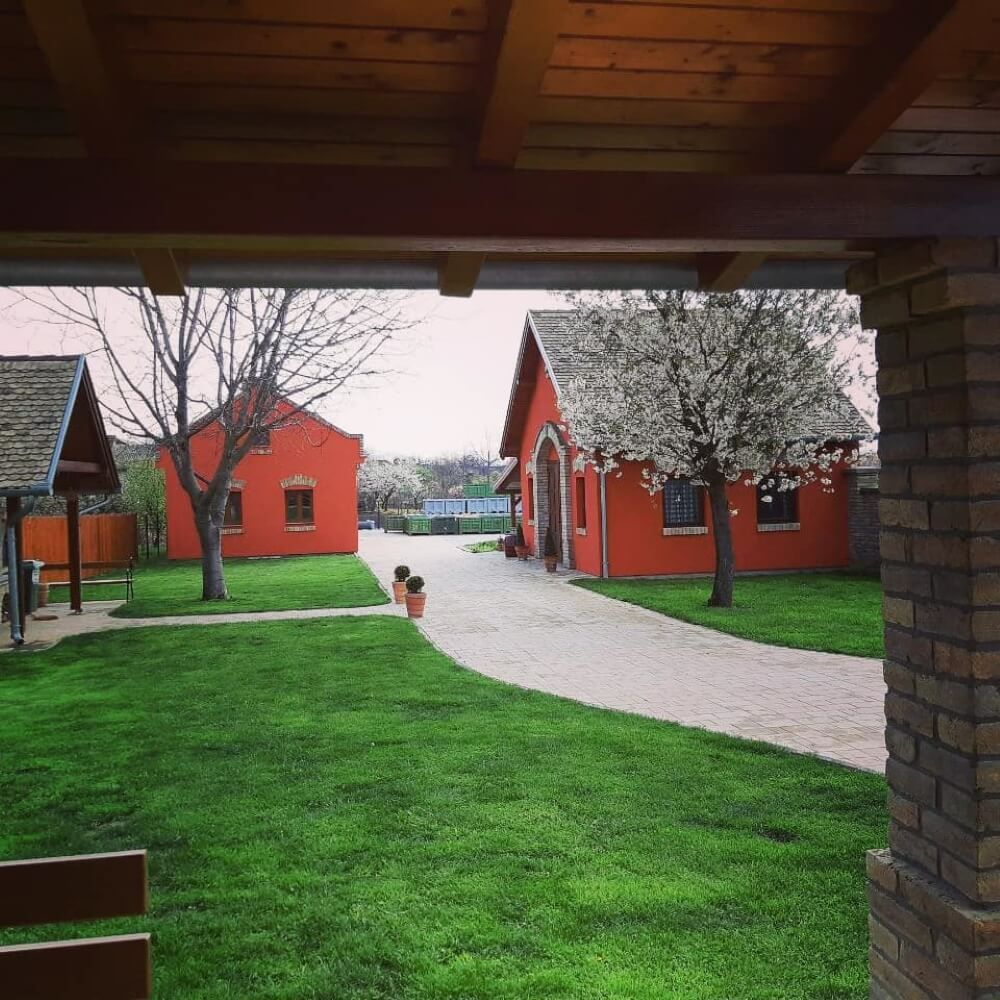 Zorić distillery in Erdut, Osijek-Baranja County.
Zorić distillery in Erdut, Osijek-Baranja County.
The Zorić family in Erdut have long been growing fruit and making Croatian brandy aka rakija. But, this youngest generation, lead by youthful father Dinko and his wife Sanja, have upped their game significantly. They have built the most modern craft rakija distillery in the region. From there, they make one of Croatia's best new premium rakijas, Divania. In English or Croatian, they will guide you around the distillery and explain the process before letting you try it on their lovely terrace. If you're lucky, you might also get to try the family-made kobasica sausages – they're very good! Their rakijas are made from apricots, quinces, apples, pears and cherries and the family are great hosts.
Seoski turizam Lacković in Bilje
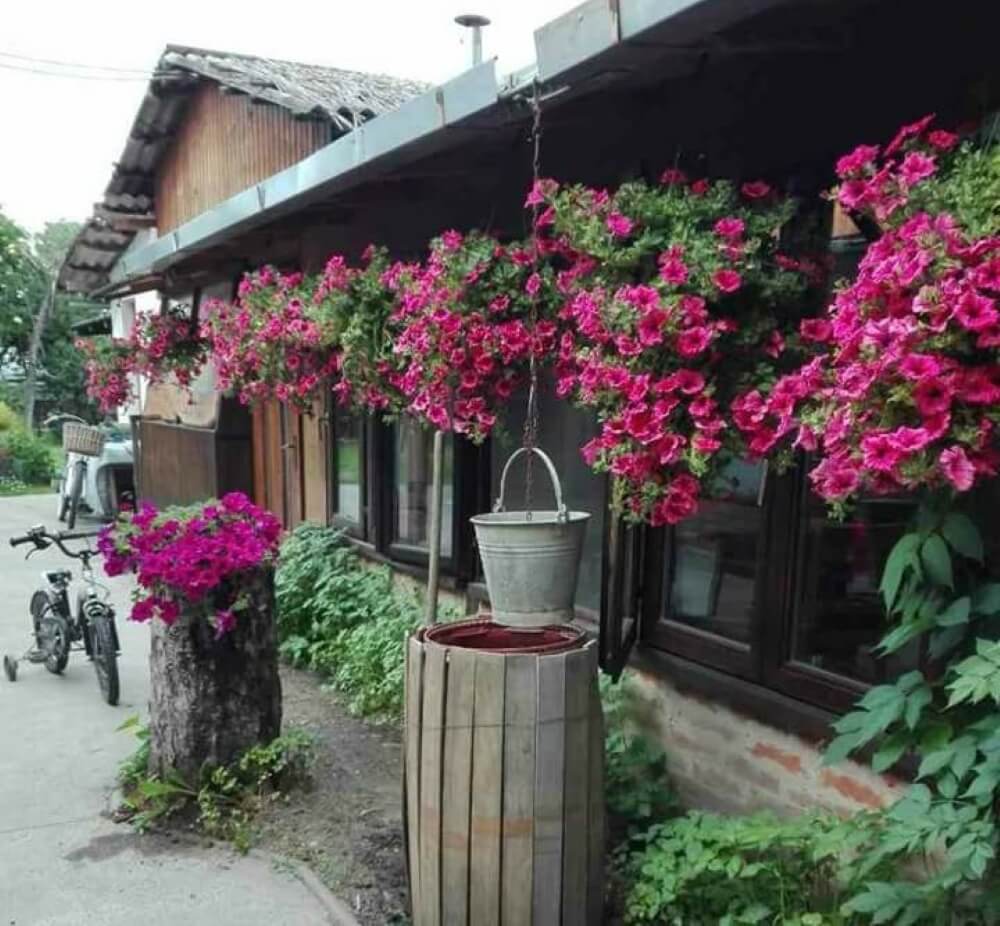 Filled with flowers, Seoski turizam Lacković in Bilje.
Filled with flowers, Seoski turizam Lacković in Bilje.
A beautiful family-run farm, with 16 beds for guests, Seoski turizam Lacković are used to hosting visitors. The farm itself has pretty rows of vegetables out back. Next to them, a variety of birds are kept. The hosting area has a lovely terrace with a view of the pretty tree-lined path that extends down through the large garden. During the recent Month of Baranja Cooking (Mjesec baranjske kuhinje), visitors tried their hand at making traditional baked foods pita and kiflice.
OPG Čudesna šuma
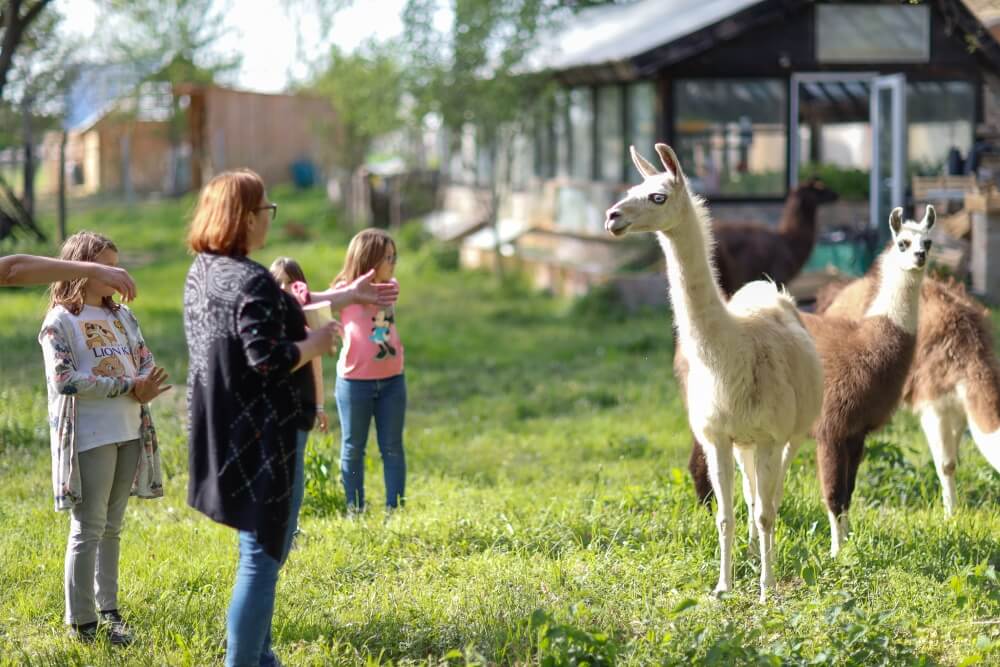 Meeting the llamas at OPG Čudesna šuma © Turistička zajednica Općine Bilje - Kopački rit.
Meeting the llamas at OPG Čudesna šuma © Turistička zajednica Općine Bilje - Kopački rit.
Visit the llamas or a special gastronomic event at this future eco-village and food forest. To read a detailed reportage from our spring 2021 visit to OPG Čudesna šuma, look here.
Both the author and Total Croatia News would like to thank the following for their invaluable help in creating this article: Ivana Jurić and the Tourist Board of Osijek-Baranja County, Marija Burek and the Tourist Board of Đakovo, Renata Forjan and Turistička zajednica Općine Bilje - Kopački rit and Domagoj Butković of expert travel guides to Slavonia and Osijek-Baranja County, Kulen travel.
Croatian Diver Budimir Šobat Featured in Guinness World Records for Longest-Ever Breath Hold!
May 14, 2021 - Croatian diver Budimir Šobat surpassed his record for the longest time breath held voluntarily by 22 seconds, and this time, it was not just for his beloved daughter Saša - but for the people of the earthquake-distraught city of Sisak as well. Guinness World Records even featured Budimir for his feat earlier this week.
A new world record for static apnea free-diving has been set in a pool in Sisak, Croatia, on the 27th of March, 2021. Ranked as one of the best divers in the world, according to the International Association for the Development of Apnea (AIDA), Budimir Šobat, better known as Buda, held his breath for a total time of 24 minutes and 33 seconds superseding his last successful attempt 3 years ago by an impressive 22 seconds.
Featured in the Guinness World Record published by Connie Suggitt on May 12, 2021, the celebrated Croatian diver proudly declared that the inspiration behind this feat was once again his daughter - who has been battling cerebral palsy, epilepsy, and autism throughout her life. When asked how he overcame the difficulties and dangers that come along with attempting a record like this, Buda answered: "The greatest motivation of all is my 21-year-old daughter, Saša, who has autism. My results are giving me the media space, and then I can speak about autism awareness". And even though the earthquake damage made it "almost impossible" for him to train during the beginning of this year, the 56-year-old diver persevered through his rigorous training and managed to perfect his breathing technique just a few weeks after resuming - making the impossible, possible.
He also mentioned that focusing on his heartbeat was the key to win in this mental sport - as how he views static apnea diving to be. After hyperventilating himself with pure oxygen for 30 minutes (the maximum amount of time allowed as per guidelines to ventilate before an attempt), he managed to stay underwater for 22 seconds more than the record he had set 3 years ago. "While I am doing my maximum static apnea, I have my eyes closed and all I am focused on is to try to hear my heartbeat. Once I heard it I became calm and ready to fight the time.", he revealed.

Nikola Cutuk / PIXSELL
What makes this man even more remarkable is that he creates a platform through these events to raise awareness for people with disabilities. Last February 24, 2018, Buda dove as part of the "I'm Not Breathing" campaign in Zagreb which supported the autism centre his daughter goes to, and where he also successfully obtained the Guinness World Record for longest breath held voluntarily (male division) with a record of 24 minutes and 11 seconds. However, this year, the event was created to bring awareness and to raise funds for his hometown, Sisak, which was heavily affected by the recent major earthquake in Croatia that happened last December 2020. "We hope to raise some money for people in need because earthquakes destroyed the whole city of Petrinja," Buda said in an interview for Net.Hr. The funds collected will be used for the reconstruction of the Room of Miracles (Soba Čuda) of the Association of Persons with Disabilities of the Sisak-Moslavina County, whose premises were severely damaged by the recent earthquake.
Proving to all of us that the only person one should try to be better than is oneself, Buda claims his age does not hold him back at all. Quite the contrary, he believes it helps him persevere through the hardships so he could achieve even better results.
"I am addicted to training of any kind so I have no problem with motivation and I never stop dreaming about achieving the top results despite my age. Now I have proved that everything is possible if you are strong and dedicated. In fact, my age gave me a benefit of experience to stay calm at the critical moments."
Guinness World Record reports that the previous record was 24 min 3.45 secs, held by Aleix Segura Vendrell in Barcelona, Spain, on 28 February 2016.
The first documented attempt was by Robert Foster (USA), who voluntarily held his breath for 13 min 42.5 sec under 3.05 m on 15 March 1959.
To follow the latest sports news in Croatia, follow TCN's dedicated page.
To get more news about sports in Croatia, CLICK HERE.


